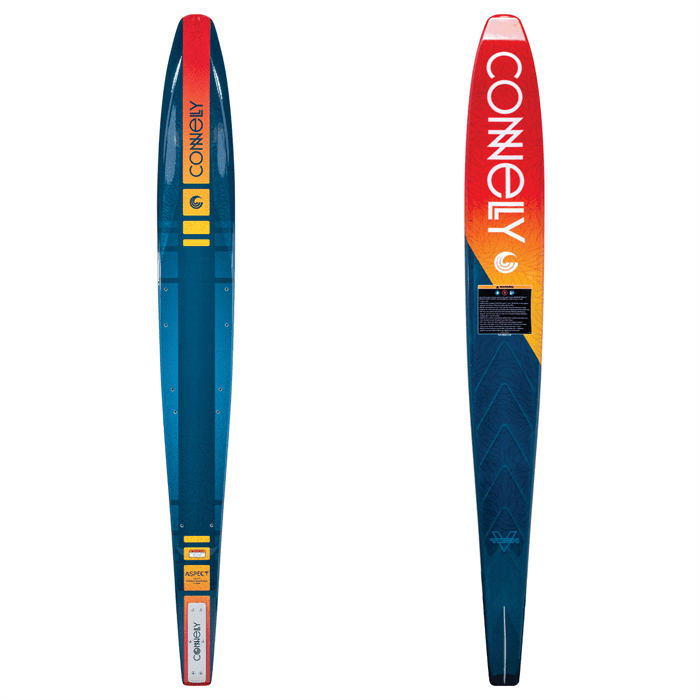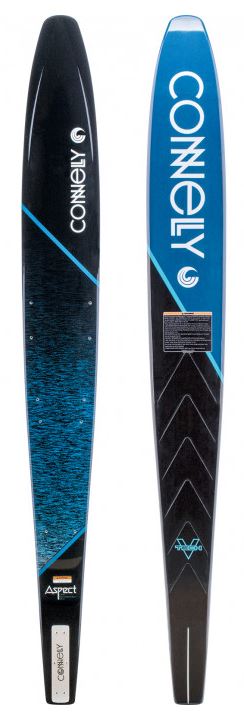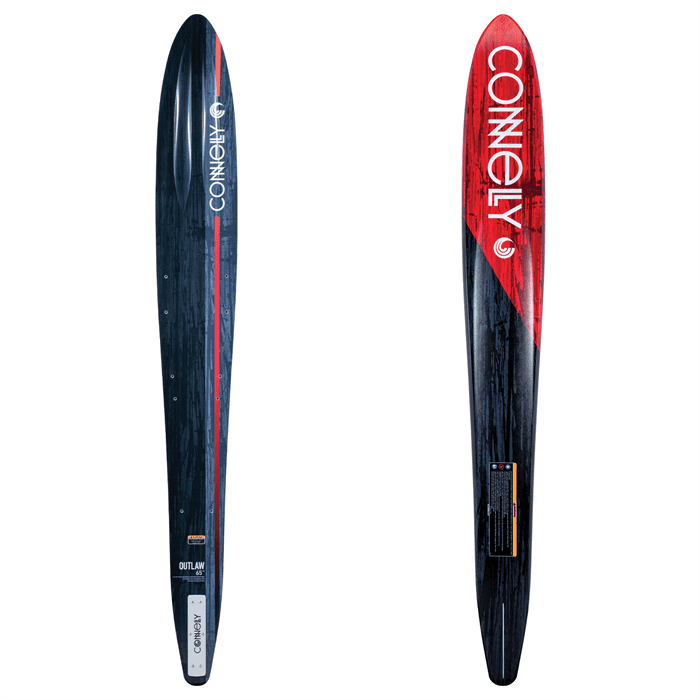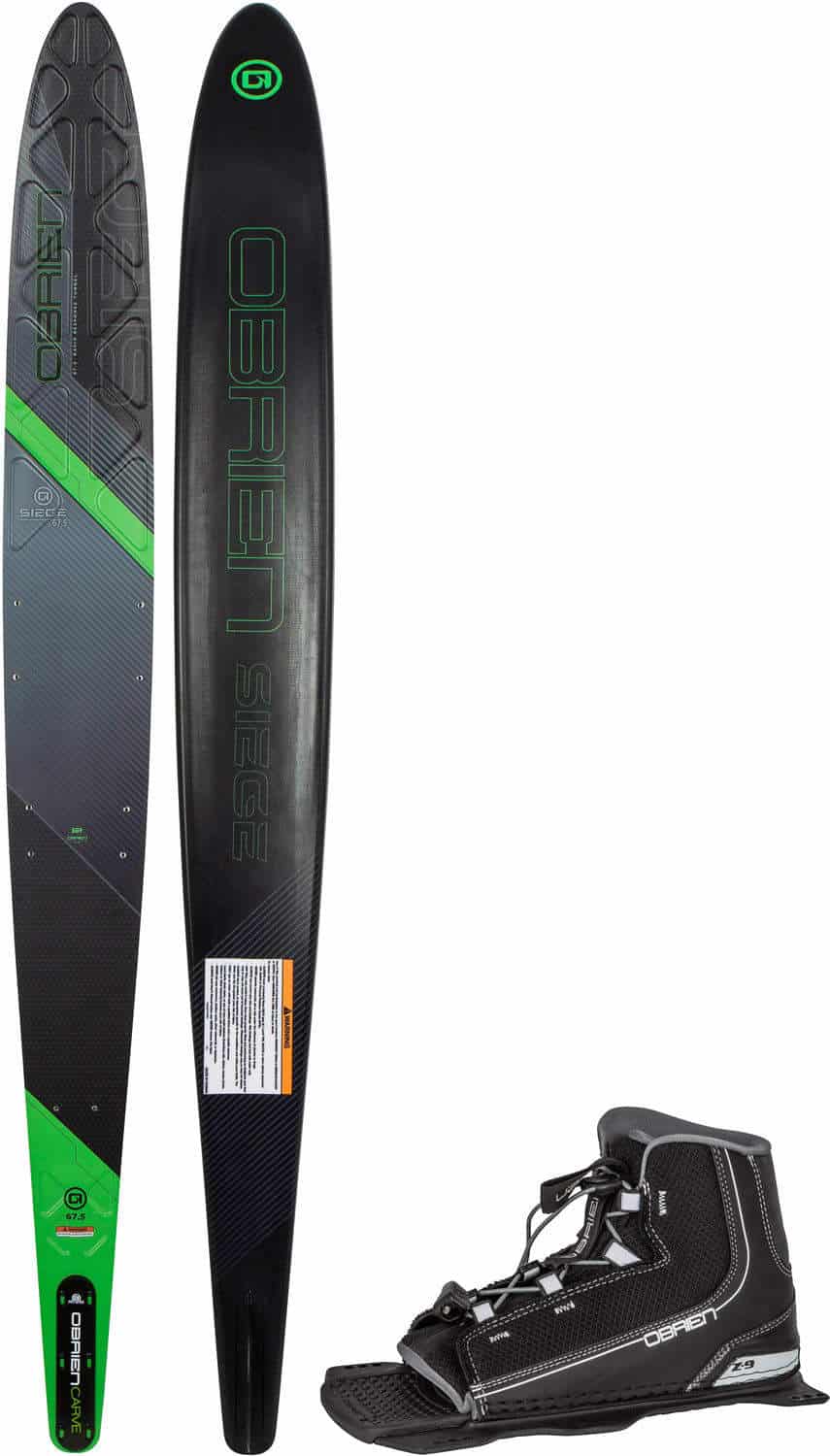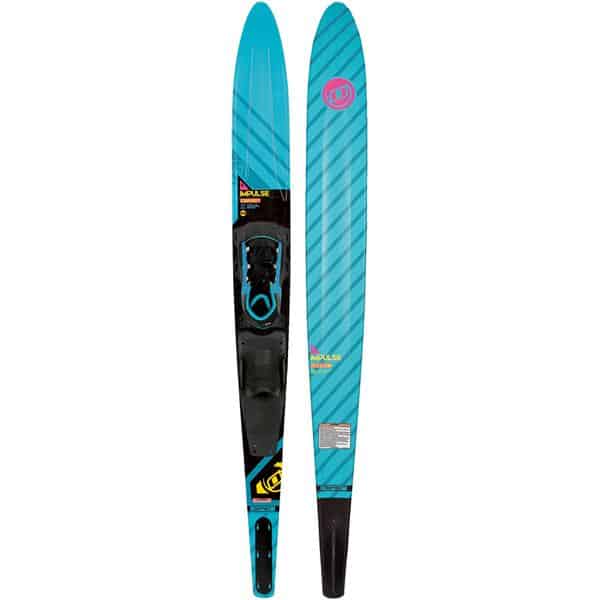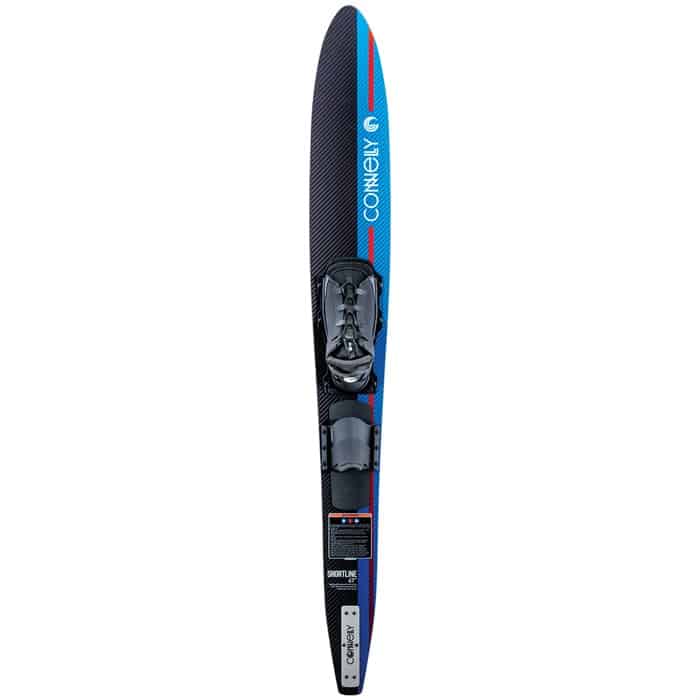5 Best Intermediate Slalom Water Skis
5 Best Intermediate Slalom Water Skis
You may be thinking that you are an intermediate slalom water skier, you can buy any ski, but that is not the case. The content mentioned in this article will help you decide the best intermediate slalom water ski for you.Top Pick
Connelly 2022 Aspect Slalom Ski
Connelly 2022 Aspect Slalom Ski
Closed Cell Polyurethane Resin Core
Standard Tunnel
Recreational Glass Flex Sequence
Check Price in USD
When finding the best intermediate Slalom water ski, Connelly Aspects Slalom Ski will always be my favorite. The 2022 version is all-set to give a new definition to this board. It is light, nimble, and designed to work best at slower speeds. It’s a great ski for beginners. A polished base offers gliding behind the boat. So, when you have such a great option to try 2022, why resist yourself from falling into the fun ski zone?
Connelly 2022 Aspect Slalom Ski
Check Price in USD
Closed Cell Polyurethane Resin Core
Standard Tunnel
Recreational Glass Flex Sequence
Connelly 2021 Aspect Slalom Ski
Connelly 2021 Aspect Slalom Ski
CAPT (Connelly Advanced Profile Technology)
Recreational Glass Flex
V-shaped steps that help improve water flow efficiency
Check Price in USD
Check Price in EUR
The Connelly Aspect focuses on beveled edges, tunnel width, and other features that will make your experience easier. While there are many intermediate slalom skis in the market, try to look at what provides more functionality rather than design.
Connelly 2021 Aspect Slalom Ski
Check Price in USD
Check Price in EUR
CAPT (Connelly Advanced Profile Technology)
Recreational Glass Flex
V-shaped steps that help improve water flow efficiency
Other Contestants For The Best Intermediate Slalom Water Ski
Connelly Outlaw Slalom Ski
Connelly Outlaw Slalom Ski 2022
Closed Cell Polyurethane Resin Core
Connelly Advanced Profile Technology (C.A.P.T.)
Recreational Glass Flex Sequence
Check Price in USD
Connelly is one of the leading slalom water ski manufacturers. Their slalom water skis focus more on learning and improving your technique. The Connelly Outlaw provides more hold and stability, a good choice for those at the intermediate and intermediate-advanced level. The ski has a narrow design, and the wide tail end allows provides for drag to slow down when turning.
Connelly Outlaw Slalom Ski 2022
Check Price in USD
Closed Cell Polyurethane Resin Core
Connelly Advanced Profile Technology (C.A.P.T.)
Recreational Glass Flex Sequence
Pros
- Closed Cell Polyurethane Resin Core
- The base consists of Acrylam, allowing you to opt for hard carves or smooth turns
- Uses Connelly Advanced Profile Technology
O’Brien Siege Slalom Water Ski
Pros
- With the tunnel concave, you can expect smooth transitions
Cons
- Even though this says intermediate, the ski will still be more suited to advanced skier who consistently run the slalom course
O’Brien Impulse Slalom Ski
O'Brien 2021 Impulse Slalom Ski
Heavy rocker
Carved fin for added stability
For beginner-intermediate skill range
Check Price in USD
The fins on this ski are adjustable, and the narrow tunnel help with tracking. The rocker patterns allow smooth transitions. You can take easy turns, and the ski lets you have more fun as compared to other more twitchy skis.
O'Brien 2021 Impulse Slalom Ski
Check Price in USD
Heavy rocker
Carved fin for added stability
For beginner-intermediate skill range
Pros
- Heavy rocker patterns help for smooth transitions
- 45 Degree Bevel that minimizes spray
- Binding size ranges from XS to S up to 7
Cons
- Ski binding is available in one range of US size only, making it less adaptable for others
Connelly Aspect Slalom Ski
Connelly 2022 Aspect Slalom Ski
Closed Cell Polyurethane Resin Core
Standard Tunnel
Recreational Glass Flex Sequence
Check Price in USD
Connelly Aspect Slalom Ski is light, nimble and designed to work best at slower speeds. It’s a great ski for beginners. A polished base offers gliding behind the boat. So, when you have such a great ski, why not try skiing with this right now?
Connelly 2022 Aspect Slalom Ski
Check Price in USD
Closed Cell Polyurethane Resin Core
Standard Tunnel
Recreational Glass Flex Sequence
Pros
- Closed-cell resin core and a recreational glass flex sequence
- Connelly Advanced Profile Technology – CAPT
- V-tech offers increased maneuverability and breaks up the water surface area
Connelly Shortline Slalom Ski
Connelly Shortline Slalom Ski
Reinforced Composite Construction
Connelly Tracking System
Swerve with RTS Bindings
Check Price in USD
Connelly Shortline is a ski that offers more space for learning rather than professional use. The ski is designed for the category of skiers belonging to beginners or intermediate. Wide tunnels and tips for increased balancing.
Connelly Shortline Slalom Ski
Check Price in USD
Reinforced Composite Construction
Connelly Tracking System
Swerve with RTS Bindings
Pros
- Reinforced composite construction that allows beginners to ski confidently
- Connelly Tracking System is a feature that keeps the ski straight once the boat accelerates
- RTS bindings help you to swerve and take slow turns
Cons
- The ski is more for beginners rather than intermediate. It has features that are convenient to use, and they do not challenge an intermediate skier
Frequently Asked Questions
When I started out, I was less informed on slalom water skis. As an intermediate skier, I had many doubts, which led me to make mistakes. These are some frequently asked questions that could make your experience easier.How Do You Determine If You Are An Intermediate Slalom Water Skier?
If you prefer a higher speed than what you started with, you are probably an intermediate water skier. Most skiers in this category ski for fun and do not plan on running the slalom course with any rope shortening. More so than turning professional, all you wish for is a good and enjoyable time on the water. Typically, you ski in a 24 mph to 28 mph speed.What Speed Range Do You Fall In For An Intermediate Slalom Water Ski?
Like I mentioned before, the speed range for an intermediate slalom water ski is 24 to 28 mph. Depending on the skier’s weight, this range can fluctuate. Note that you should not be crossing that range from what your intermediate slalom water ski can handle.How Is The Sizing Of An Intermediate Slalom Water Ski Determined?
The size of the ski completely depends on the skier’s weight and the average boat speed used. No matter your skill level, the sizing method remains the same. The ski size will increase or decrease depending on the skier’s weight. The ski sizing falls in the range of 62 inches to 72 inches. Sizes may sometimes remain the same for you as you jump on higher levels of slalom skiing. But other elements, such as the width, shape, edge, etc., enter the picture to determine which ski is the best for you.What Are The Different Ski Types?
There are three general types of skis that are classifiable into levels of skiing. This means you can determine which type of ski is for you based on your aspirations.-
Slalom Course Skis
-
Cross-Over Skis
-
Free-Ski
How Does A Concave Base Help To Determine The Right Slalom Water Ski?
When splitting a ski based on its base, you should know a few key factors. As a beginning skier, I barely paid attention to ski bases, but here is how a concave base plays an important role in your ski choice. This shape from under the ski will determine the stability and the ability to turn edges. There are three types in total.-
Flat Spot Design
-
Tunnel-Concave Design
-
Full-Concave Design

